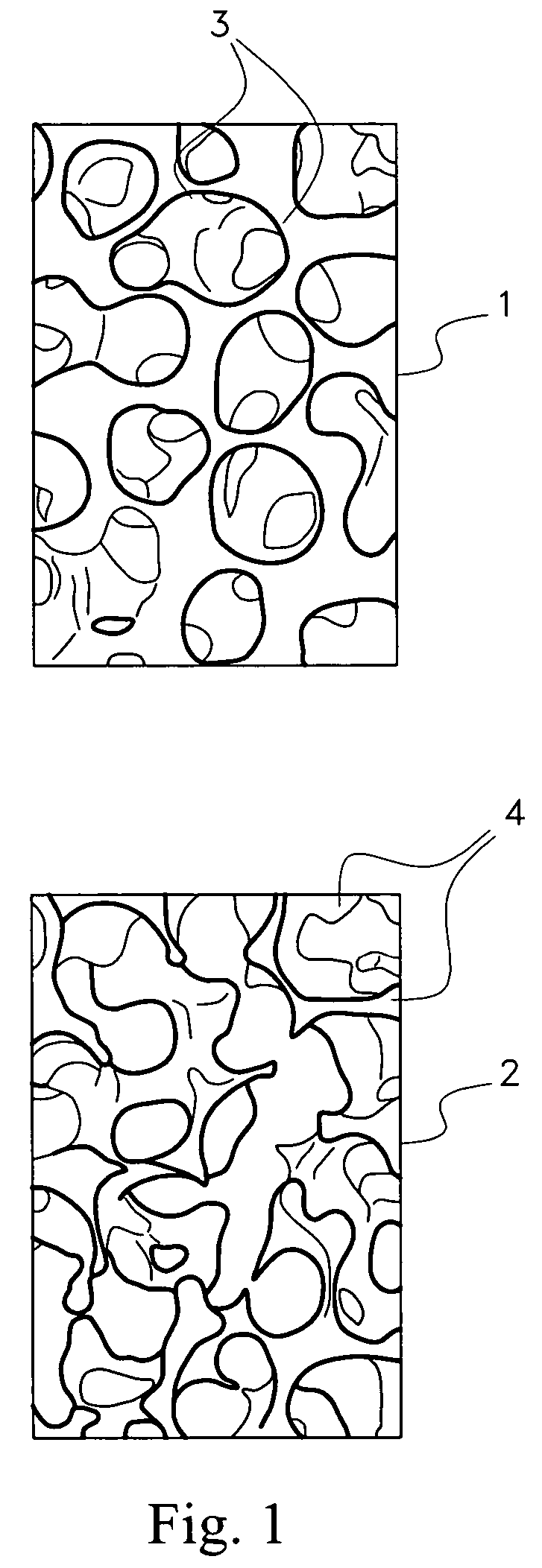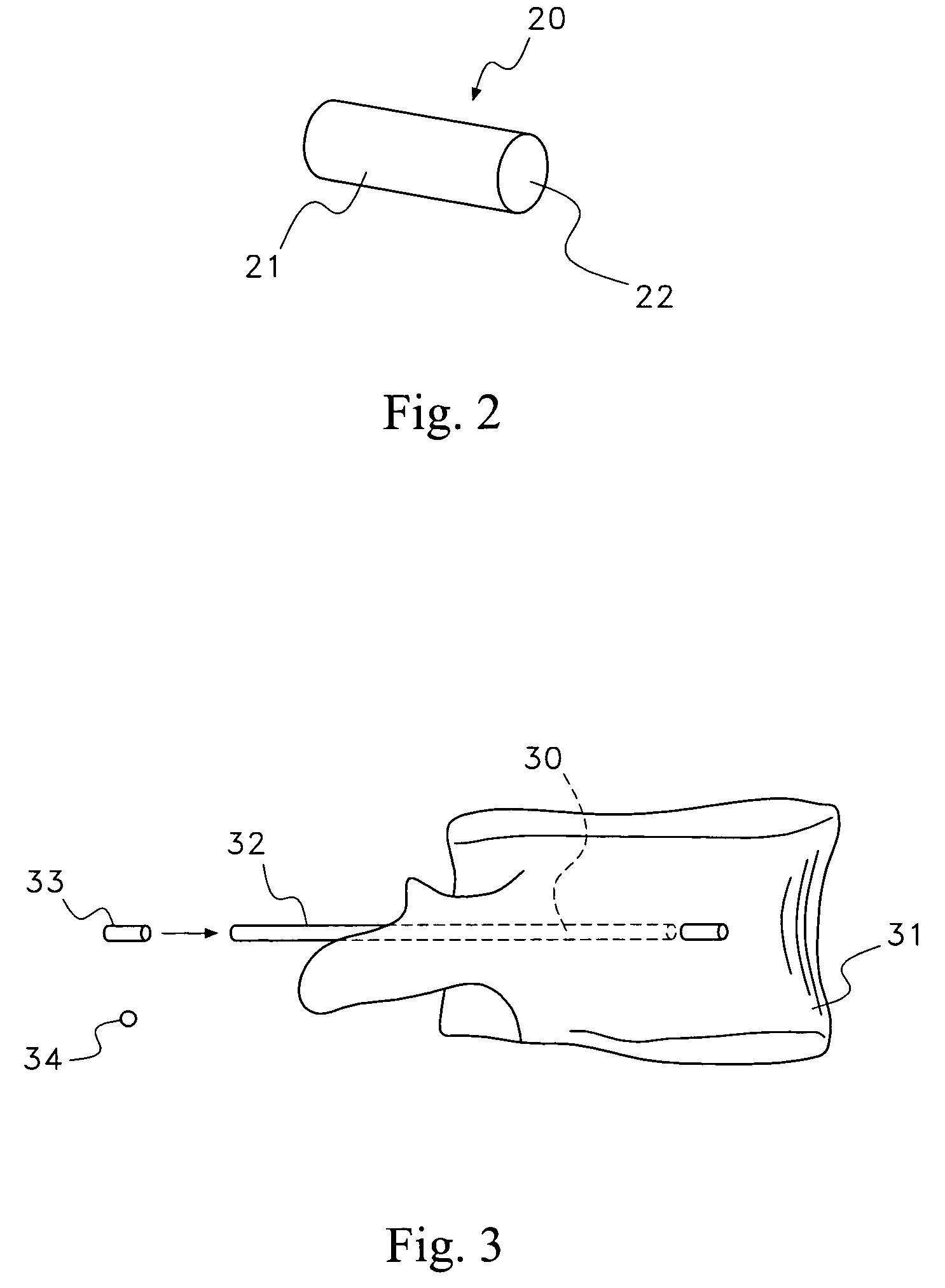Implant depots to deliver growth factors to treat osteoporotic bone
a growth factor and implant depot technology, applied in the field of implants, can solve the problems of increasing the risk of osteoporosis, affecting the bone mineral density of the bone, and affecting the bone mineral density, and achieve the effect of increasing the bone mineral density
- Summary
- Abstract
- Description
- Claims
- Application Information
AI Technical Summary
Benefits of technology
Problems solved by technology
Method used
Image
Examples
Embodiment Construction
[0041]For the purposes of promoting an understanding of the principles of the invention, reference will now be made to preferred embodiments and specific language will be used to describe the same. It will nevertheless be understood that no limitation of the scope of the invention is thereby intended, and that alterations and further modifications of the invention and such further applications of the principles of the invention as herein being contemplated would normally occur to one skilled in the art to which the invention relates.
[0042]Referring now to the figures, FIG. 1 illustrates a microscopic picture regional view of the condition of normal bone 1 versus that of osteoporotic bone 2. Bone normally has an internal mesh-like structure, the density of which may vary at different points. However, osteoporosis causes the bone mineral density to be reduced, such that the bone micro-architecture is disrupted and the amount and variety of non-collagenous proteins in bone is changed. ...
PUM
| Property | Measurement | Unit |
|---|---|---|
| porosity | aaaaa | aaaaa |
| length | aaaaa | aaaaa |
| diameter | aaaaa | aaaaa |
Abstract
Description
Claims
Application Information
 Login to View More
Login to View More - R&D
- Intellectual Property
- Life Sciences
- Materials
- Tech Scout
- Unparalleled Data Quality
- Higher Quality Content
- 60% Fewer Hallucinations
Browse by: Latest US Patents, China's latest patents, Technical Efficacy Thesaurus, Application Domain, Technology Topic, Popular Technical Reports.
© 2025 PatSnap. All rights reserved.Legal|Privacy policy|Modern Slavery Act Transparency Statement|Sitemap|About US| Contact US: help@patsnap.com



